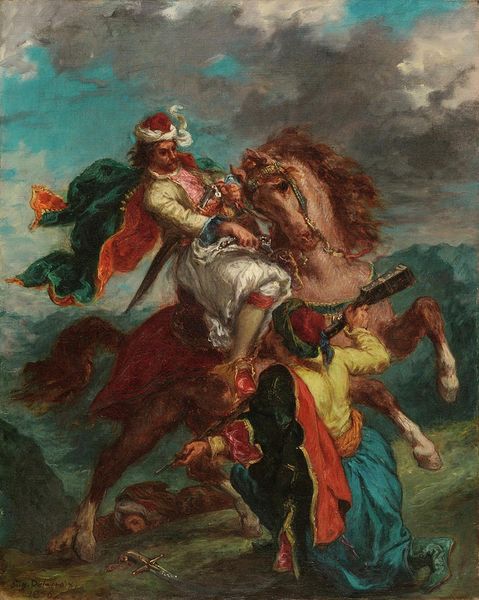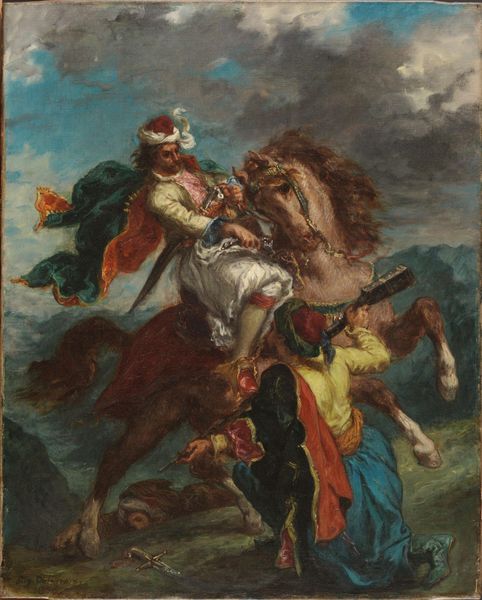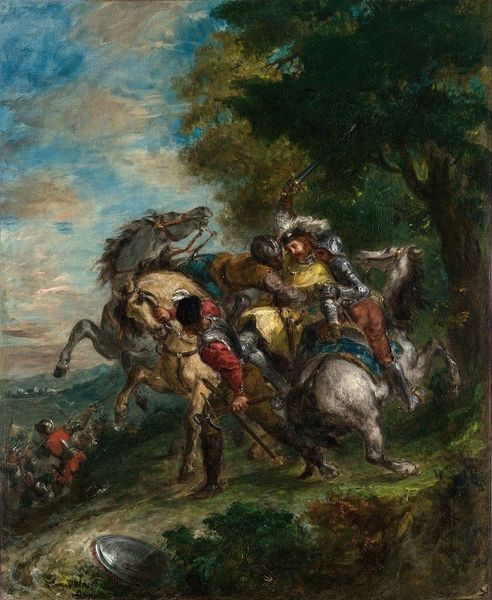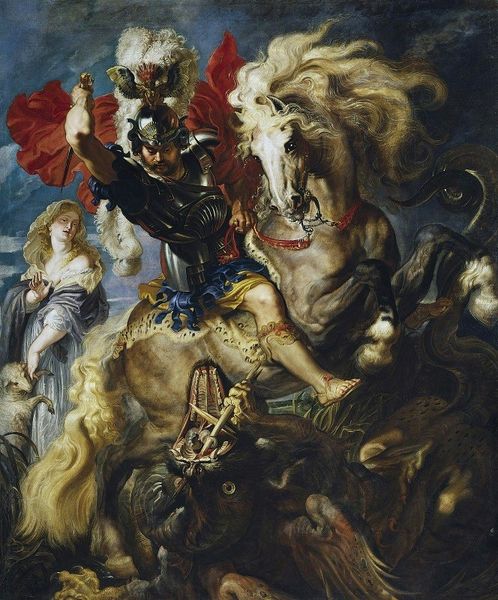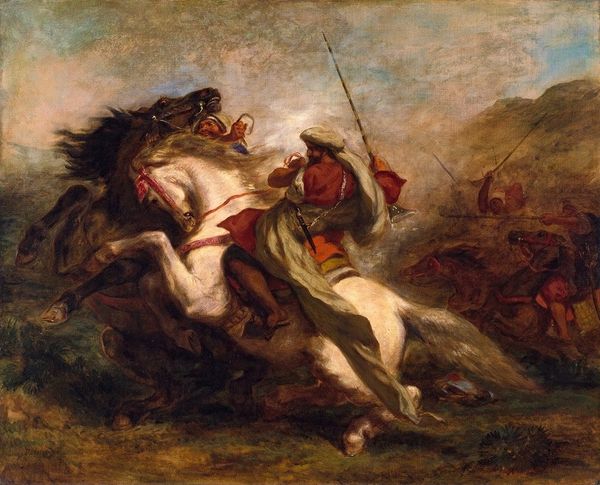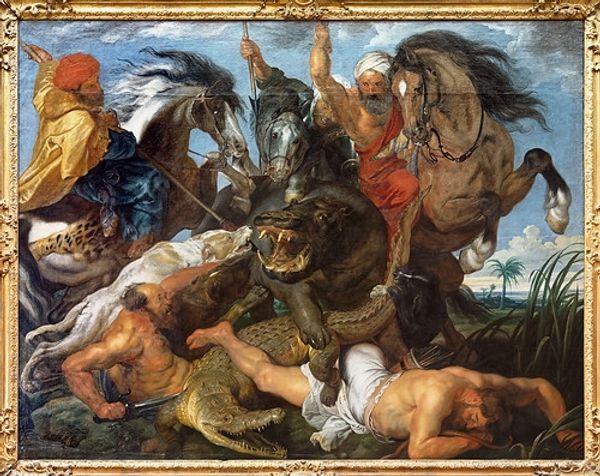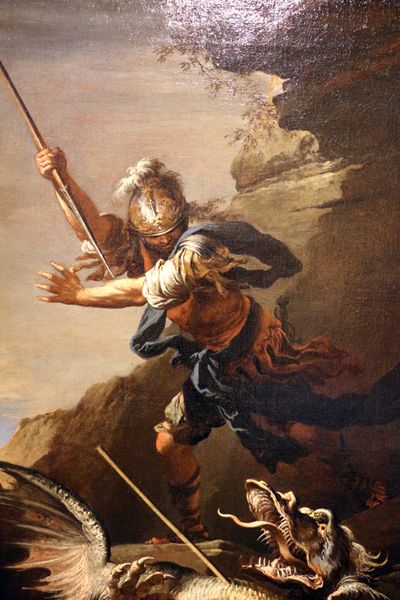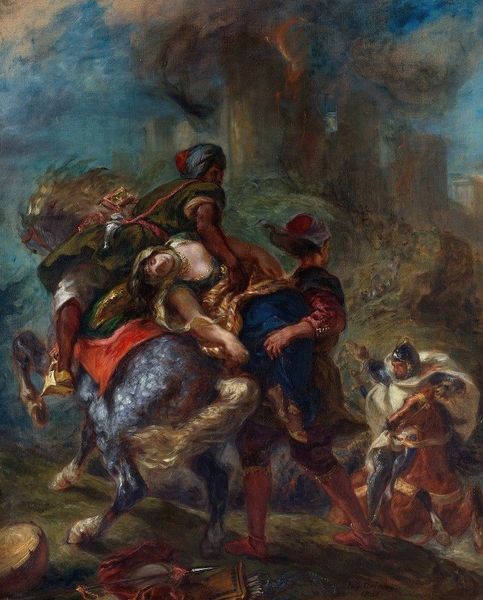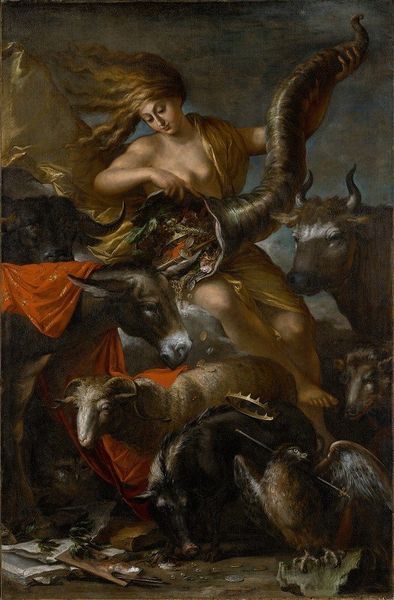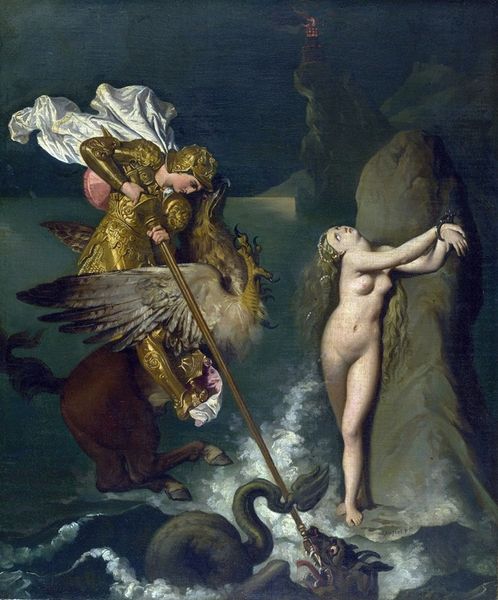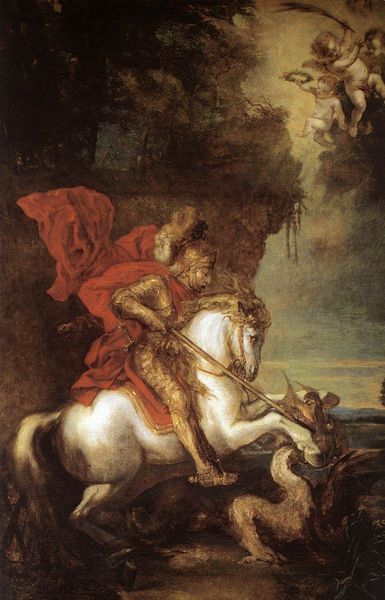
painting, oil-paint
#
figurative
#
narrative-art
#
painting
#
oil-paint
#
painted
#
figuration
#
oil painting
#
romanticism
#
genre-painting
#
history-painting
Copyright: Public Domain: Artvee
Editor: Okay, next up we have "Combat of a Greek and a Turk," an oil painting by Horace Vernet, created sometime after 1835. It's...intense! So much dramatic movement and clashing energy. What do you see in this piece, beyond the obvious conflict? Curator: This work offers us a window into the entangled histories of orientalism, nationalism, and the representation of conflict. Vernet, as a French artist, participates in a long tradition of European artists depicting the "Orient." But whose gaze are we seeing this combat through? Editor: You mean, is he taking sides? I guess I just assumed the Greek was the hero… Curator: Exactly! And what assumptions underpin that? Vernet's position is complicated; he was deeply embedded in the French military and painted many scenes of colonial exploits. Consider how this painting might reflect or challenge prevailing European attitudes towards the Ottoman Empire and the Greek struggle for independence. What do the costumes and weaponry tell us about how Vernet viewed these cultures? Editor: That's a good point. It’s definitely a romanticized vision. It’s less about accurate representation and more about creating a spectacle. The painting exoticizes both figures, focusing on the perceived ‘otherness’ of both combatants rather than offering any genuine insight into their identities. It almost makes it seem as though the setting and clothing are caricatures. Curator: Precisely! And even further, this is happening while France occupies Algeria. So we have to ask, what role does this orientalist fantasy serve within the broader context of French colonialism and its own "combat" with the "other?" By looking at such aspects, do you find your understanding of this work change? Editor: Definitely. I now realize it's not just a historical painting, but a political statement wrapped in romanticism. Curator: It highlights how art can be both aesthetically compelling and deeply implicated in systems of power and representation.
Comments
No comments
Be the first to comment and join the conversation on the ultimate creative platform.
